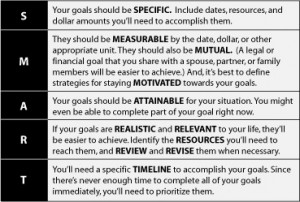In a call center environment,there is one person who is seen as the point person of all, the one who knows the answer to whatever product-related question you have, the resolver of issues, the one person who bridges management to the front line associates—the team leader.
But what makes a team leader? What does it take to handle a team? If you are one of those people who have been aiming at handling a team, here are some of the qualities and mindset that you need to imbibe:
A leader sets goals
Setting goals is one of the primary tasks of a leader. This activity is usually done during coaching sessions which a leader is expected to do 80 percent of the time. A leader sets goals for the entire team, as well as for each individual associate.
When taking on this task, remember to be SMART:
After assigning goals, follow through by checking up on the performance of the team and every associate.
A leader is an influencer
The ability to influence is one essential quality a team leader possesses. This is a “tool” that a leader uses to achieve his/her goal while using the slightest number of words.
Example:
To influence the team to come to work on time, you can lead by example.Being in the office before the scheduled shift is a good way to control absenteeism and tardiness, which would then lead to a good reliability score for the team.
A leader walks
One of the best strategies for team leaders is MBWA or management by walking around.
According to SmartPlanet Editor Joe McKendrick,“Steve Jobs never got an MBA (he would have majored in something else anyway), but he attained his MBWA with honors.” The late Apple CEO believed that MBWA is one way to keep managers in touch with every employee who makes things happen for the company.
Just as Jobs did, what sets a leader from a great leader is this simple task. By walking around your team’s area and pausing behind an associate’s station, you can easily correct simple things that you see.
Example #1
As per company rules, you know that bringing a mobile phone is prohibited inside the production area. Say, you have an employee named John who keeps checking his mobile phone and texts every now and then while on duty. The thing is, he sits far away from your station. By applying MBWA, you can easily correct this behavior and avoid having to deal with it again.
Example #2
Jane is a new associate and it is her first day to be on the phone. A leader who practices MBWA will be able to help Jane whenever possible and/or give her a pat on the back if she did a great job closing the call.
A leader corrects behavior
Most leaders think that being a leader is a popularity contest and forgo doing the dirty working—namely, writing up disciplinary actions. Remember that a great leader is not an enabler; he or she does not tolerate unproductive behavior.And if an employee violates any company policy, the appropriate sanctions should be given.
Newly promoted leaders are intimidated when doing this, and some just do not have the appropriate training to do it. Always remember to inform your associates that sanctioning them is not a punishment;rather, it is a reminder that there are policies that everyone needs to follow.
A leader is a good communicator
Another basic skill of a team leader is the ability to communicate properly. Note that being able to speak one-on-one is one thing, but being able to train your whole team is another. One of the expectations of leaders is that you will be capable of expressing what you want to say. Being a good speaker is required when coaching the team, as well as during triad coaching (with the client and an observer). Oral communication skills are also vital during meetings and business reviews.
All these points seem easy when written, but the application is a lot more challenging, especially if you have to deal with 15 or 20 people per team everyday. However, no matter how tiring, the main idea is to know how to keep the team functioning despite the circumstances. And remember: a great leader always smiles.
PITON-Global connects you with industry-leading outsourcing providers to enhance customer experience, lower costs, and drive business success.

